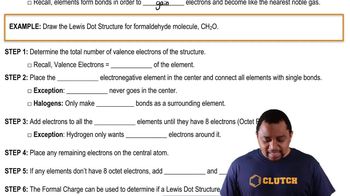Here are the essential concepts you must grasp in order to answer the question correctly.
Neutralization Reaction
A neutralization reaction occurs when an acid reacts with a base to produce water and a salt. In this case, hydrochloric acid (HClO4) reacts with sodium hydroxide (NaOH) to form water and sodium perchlorate. Understanding this reaction is crucial for determining the stoichiometry involved in the neutralization process.
Recommended video:
Lewis Dot Structures: Neutral Compounds
Molarity (M)
Molarity is a measure of concentration defined as the number of moles of solute per liter of solution. It is expressed in moles per liter (M). In this question, the molarity of both HClO4 and NaOH solutions is provided, which is essential for calculating the volume of acid needed to neutralize the base.
Recommended video:
Stoichiometry
Stoichiometry involves the calculation of reactants and products in chemical reactions based on balanced equations. For the neutralization of NaOH by HClO4, the stoichiometric coefficients indicate the ratio in which the reactants react. This concept is vital for determining the exact volume of HClO4 required to completely neutralize the given amount of NaOH.
Recommended video:




